Earache infection symptoms. Ear Infection Symptoms: Recognizing Signs in Children and Adults
What are the common symptoms of ear infections in children and adults. How can you differentiate between inner, middle, and outer ear infections. When should you seek medical attention for an ear infection.
Understanding Ear Infections: Types and Causes
Ear infections are a common ailment affecting both children and adults. They can occur in different parts of the ear, each with its own set of symptoms and causes. Understanding the types of ear infections is crucial for proper diagnosis and treatment.
Inner Ear Infections
Inner ear infections, also known as labyrinthitis, can affect both children and adults. These infections are typically caused by viral or bacterial pathogens and can lead to inflammation of the labyrinth and vestibular system.
Middle Ear Infections (Otitis Media)
Middle ear infections, or otitis media, are more common in children. They often result from viral infections like colds and flu, which affect the Eustachian tube connecting the middle ear to the back of the nose.

Outer Ear Infections (Otitis Externa)
Outer ear infections, also called otitis externa or “swimmer’s ear,” usually affect adults aged 45 to 75. These infections are caused by irritants in the ear canal, such as water, eczema, or prolonged use of earplugs.
Recognizing Ear Infection Symptoms in Children and Adults
Ear infections can manifest differently in children and adults. Recognizing the symptoms early can lead to prompt treatment and relief.
Common Symptoms in Both Children and Adults
- Earache or pain inside the ear
- Difficulty hearing
- Feeling of pressure or fullness inside the ear
- Discharge running out of the ear
- Itching and irritation in and around the ear
- Scaly skin in and around the ear
Additional Symptoms in Children
Young children and babies with ear infections may also exhibit the following behaviors:
- Rubbing or pulling their ear
- Unresponsiveness to certain sounds
- Irritability or restlessness
- Loss of appetite
- Poor balance
Duration and Severity of Ear Infection Symptoms
How long do ear infection symptoms typically last? Most ear infections clear up within 3 days, although symptoms can persist for up to a week in some cases. If you or your child experience a high fever or feel too unwell to engage in normal activities, it’s advisable to stay home and avoid contact with others until you feel better.
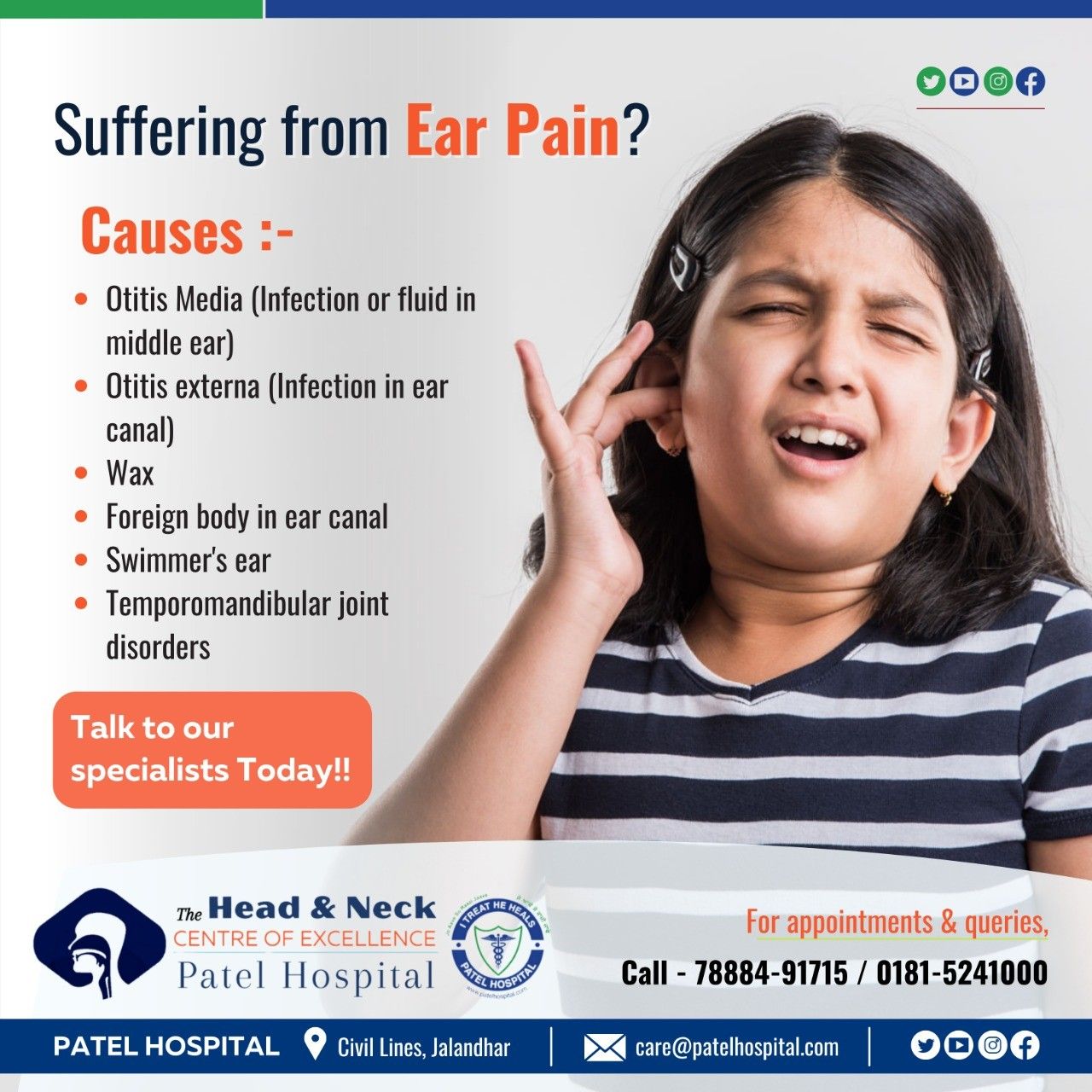
Home Remedies and Self-Care for Ear Infections
While many ear infections resolve on their own, there are several self-care measures you can take to alleviate pain and discomfort:
- Use over-the-counter painkillers such as paracetamol or ibuprofen (Note: Children under 16 should not take aspirin)
- Apply a warm or cold compress to the affected ear
- Gently clean any discharge by wiping the ear with cotton wool
It’s important to avoid certain actions that may exacerbate the condition:
- Do not insert anything into the ear canal to remove earwax, including cotton buds or fingers
- Avoid getting water or shampoo in the affected ear
- Refrain from using decongestants or antihistamines, as there’s no evidence they help with ear infections
When to Seek Medical Attention for Ear Infections
While many ear infections resolve without medical intervention, certain circumstances warrant a visit to a healthcare professional.
Consult a GP if:
- Earache persists or worsens after 3 days
- You or your child experience recurrent ear infections
Seek immediate medical advice if you or your child experience:
- General unwellness or a very high fever
- Swelling around the ear
- Fluid discharge from the ear
- Sudden hearing loss or changes in hearing
- Additional symptoms like vomiting, severe sore throat, or dizziness
For infants under 2 years old with earache in both ears, prompt medical attention is crucial. Additionally, individuals with long-term medical conditions or weakened immune systems should seek medical advice if they develop symptoms of an ear infection.

Medical Diagnosis and Treatment of Ear Infections
How do healthcare professionals diagnose and treat ear infections? The diagnostic process typically involves a physical examination of the ear using an otoscope, a small instrument that allows the doctor to visualize the ear canal and eardrum.
Otoscope Examination
During the examination, the healthcare provider may use an otoscope that emits a small puff of air. This helps check for blockages, which could indicate an infection.
Treatment Options
Treatment for ear infections varies depending on the type, severity, and cause of the infection. In many cases, especially for infections inside the ear, antibiotics are not the first line of treatment. Why? Because these infections often clear up on their own, and antibiotics may not significantly improve symptoms, including pain.
However, antibiotics may be prescribed in certain situations:
- If the ear infection doesn’t improve after 3 days
- If there’s fluid discharge from the ear
- For patients with factors that increase the risk of complications, such as a weakened immune system
- For children under 2 years old with infections in both ears
In cases where antibiotics are not prescribed, your healthcare provider might recommend eardrops containing a painkiller and an anesthetic to help manage symptoms.
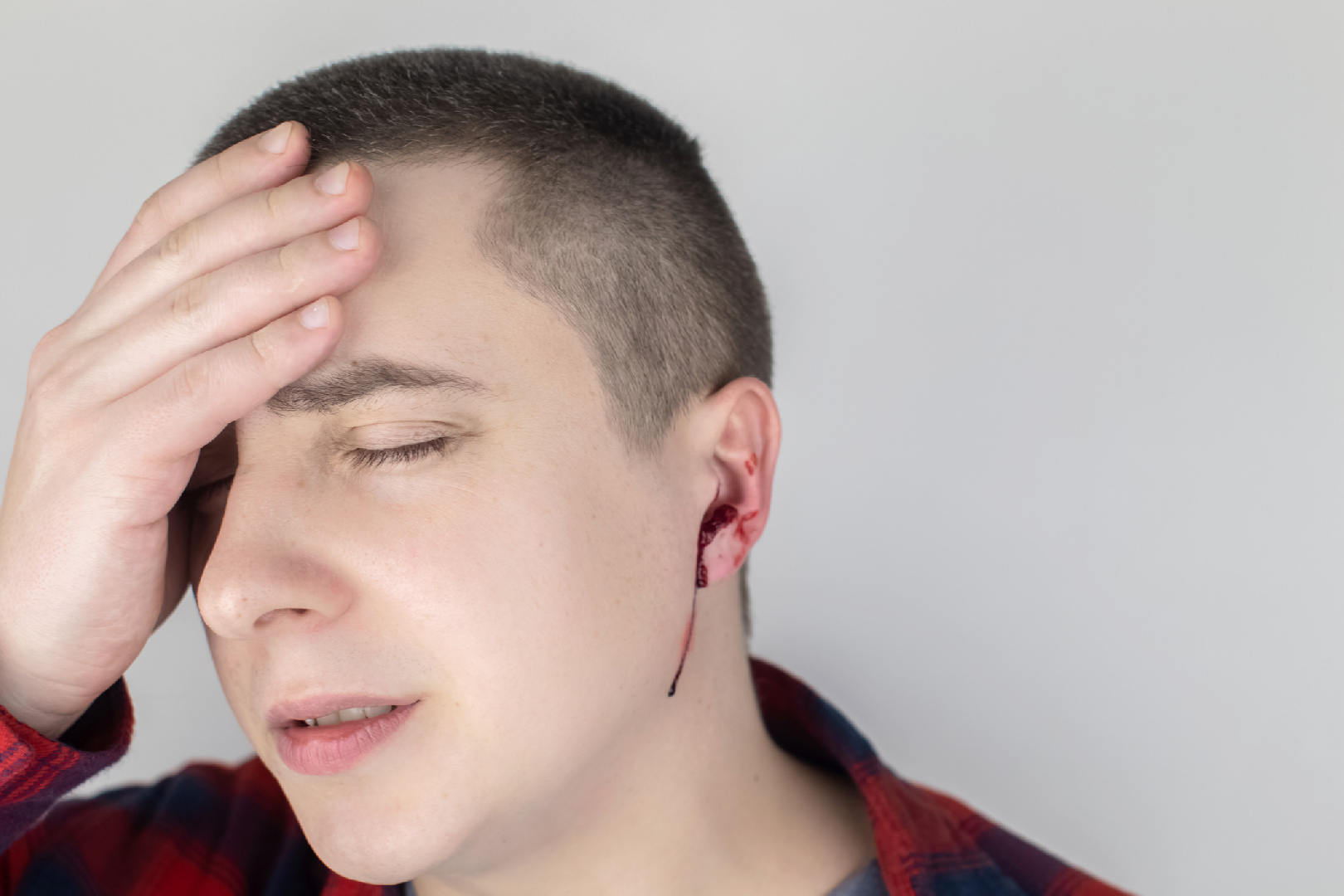
Preventing Ear Infections: Tips and Best Practices
While not all ear infections are preventable, there are steps you can take to reduce the risk of developing them:
- Practice good hygiene by washing hands frequently to reduce the spread of viruses and bacteria
- Avoid exposure to secondhand smoke, which can increase the risk of ear infections in children
- Breastfeed infants when possible, as it can boost their immune system
- Keep up-to-date with vaccinations, particularly those that protect against pneumococcal diseases and influenza
- Avoid swimming in polluted water to prevent outer ear infections
- Dry your ears thoroughly after swimming or bathing
- Avoid inserting foreign objects into the ear canal
By following these preventive measures, you can significantly reduce the likelihood of developing ear infections and maintain overall ear health.
Long-Term Effects and Complications of Untreated Ear Infections
While most ear infections resolve without complications, untreated or recurrent infections can lead to more serious issues. What are the potential long-term effects of untreated ear infections?

- Chronic otitis media: Persistent inflammation of the middle ear
- Hearing loss: Temporary or permanent damage to the auditory system
- Speech and language delays in children: Due to impaired hearing during crucial developmental stages
- Mastoiditis: Infection of the mastoid bone behind the ear
- Cholesteatoma: Abnormal skin growth in the middle ear
- Facial nerve paralysis: In rare, severe cases
These potential complications underscore the importance of proper diagnosis and treatment of ear infections, especially in children and individuals with recurrent infections.
Understanding the symptoms, causes, and treatment options for ear infections empowers individuals to seek appropriate care and take preventive measures. By recognizing the signs early and following proper care guidelines, you can effectively manage ear infections and minimize their impact on your daily life and overall health.
Remember, while many ear infections resolve on their own, persistent symptoms or complications warrant medical attention. Always consult with a healthcare professional if you’re unsure about the severity of your condition or if symptoms worsen over time.

Ear infections – NHS
Ear infections are very common, particularly in children. You do not always need to see a GP for an ear infection as they often get better on their own within 3 days.
Check if it’s an ear infection
The symptoms of an ear infection usually start quickly and include:
- pain inside the ear
- a high temperature
- being sick
- a lack of energy
- difficulty hearing
- discharge running out of the ear
- a feeling of pressure or fullness inside the ear
- itching and irritation in and around the ear
- scaly skin in and around the ear
Young children and babies with an ear infection may also:
- rub or pull their ear
- not react to some sounds
- be irritable or restless
- be off their food
- keep losing their balance
Most ear infections clear up within 3 days, although sometimes symptoms can last up to a week.
If you, or your child, have a high temperature or you do not feel well enough to do your normal activities, try to stay at home and avoid contact with other people until you feel better.
Differences between inner, middle and outer ear infections
| Inner ear infection | Middle ear infection (otitis media) | Outer ear infection (otitis externa) |
|---|---|---|
| Can affect both children and adults | Usually affects children | Usually affects adults aged 45 to 75 |
| Caused by viral or bacterial infections | Caused by viruses like colds and flu | Caused by something irritating the ear canal, such as eczema, water or wearing earplugs |
| Affects parts of the inner ear like the labyrinth and vestibular system, and can lead to labyrinthitis | Affects the eustachian tube, which connects the middle ear (area behind the eardrum) to the back of the nose | Affects the ear canal (the tube between the outer ear and the eardrum) |
How to treat an ear infection yourself
To help relieve any pain and discomfort from an ear infection:
Do
use painkillers such as paracetamol or ibuprofen (children under 16 should not take aspirin)
place a warm or cold flannel on the ear
remove any discharge by wiping the ear with cotton wool
Don’t
do not put anything inside your ear to remove earwax, such as cotton buds or your finger
do not let water or shampoo get in your ear
do not use decongestants or antihistamines – there’s no evidence they help with ear infections
A pharmacist can help with an ear infection
Speak to a pharmacist if you think you have an outer ear infection.
They can recommend acidic eardrops to help stop bacteria or fungus spreading.
Non-urgent advice: See a GP if you or your child have:
- earache that does not start to get better after 3 days
- regular ear infections
Urgent advice: Get advice from 111 now if you have:
- become generally unwell
- a very high temperature or feel hot and shivery
- swelling around the ear
- fluid coming from the ear
- hearing loss or a change in hearing
- other symptoms, like being sick, a severe sore throat or dizziness
- a child under 2 with earache in both ears
- a long-term medical condition (such as diabetes or a heart, lung, kidney or neurological disease) and symptoms of an ear infection
- a weakened immune system (for example, because of chemotherapy) and symptoms of an ear infection
What happens at your appointment
The GP will often use a small light (an otoscope) to look in the ear.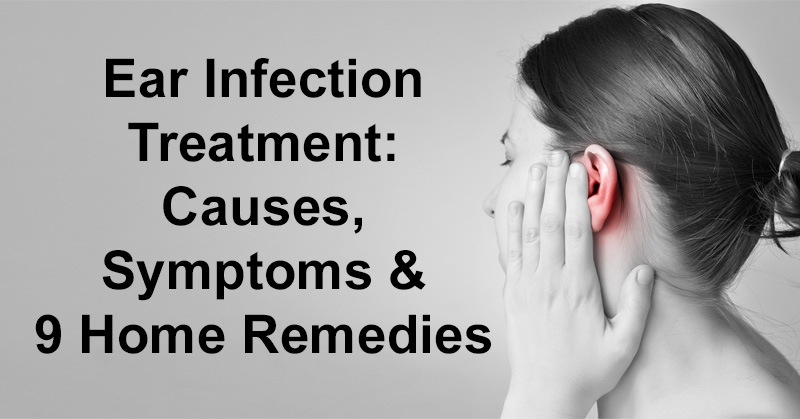
Some otoscopes blow a small puff of air into the ear. This checks for blockages, which could be a sign of an infection.
Treatment from a GP
The GP may prescribe medicine for your ear infection, depending on what’s caused it.
Infections inside the ear
Antibiotics are not usually offered because infections inside the ear often clear up on their own and antibiotics make little difference to symptoms, including pain.
Antibiotics might be prescribed if:
- an ear infection does not start to get better after 3 days
- you or your child has any fluid coming out of the ear
- there are other factors that increase your or your child’s risk of complications, such as having a weakened immune system
They may also be prescribed if your child is less than 2 years old and has an infection in both ears.
If antibiotics are not prescribed, eardrops containing a painkiller and an anaesthetic might be prescribed.
Outer ear infections
The GP might prescribe:
- antibiotic eardrops – to treat a bacterial infection
- steroid eardrops – to bring down swelling
- antifungal eardrops – to treat a fungal infection
- antibiotic tablets – if your bacterial infection is severe
If you have a spot or boil in your ear, the GP may pierce it with a needle to drain the pus.
Eardrops may not work if they’re not used correctly.
How to use eardrops
- Remove any visible discharge or earwax using cotton wool.
- Hold the bottle in your hand to warm it.
 Cold eardrops can make you feel dizzy.
Cold eardrops can make you feel dizzy. - Lie on your side with the affected ear facing up to put the drops in.
- Gently pull and push your ear to work the drops in.
- Stay lying down for 5 minutes so the drops do not come out.
Preventing ear infections
You cannot always prevent ear infections, particularly inner ear infections caused by colds and flu.
To help avoid inner ear infections:
- make sure your child is up to date with vaccinations
- keep your child away from smoky environments
- try not to give your child a dummy after they’re 6 months old
To help avoid outer ear infections:
- do not stick cotton wool buds or your fingers in your ears
- use earplugs or a swimming hat over your ears when you swim
- try to avoid water or shampoo getting into your ears when you have a shower or bath
- treat conditions that affect your ears, such as eczema or an allergy to hearing aids
Page last reviewed: 16 June 2021
Next review due: 16 June 2024
Middle ear infection (otitis media)
See all parts of this guide
Hide guide parts
-
1.
About middle ear infections
-
2.
Diagnosing middle ear infections
-
3.
Treating middle ear infections
-
4.
Complications of middle ear infections
About middle ear infections
Otitis media is an infection of the middle ear that causes inflammation (redness and swelling) and a build-up of fluid behind the eardrum.
Anyone can develop a middle ear infection but infants between six and 15 months old are most commonly affected.
It’s estimated that around one in every four children experience at least one middle ear infection by the time they’re 10 years old.
Symptoms of a middle ear infection
In most cases, the symptoms of a middle ear infection (otitis media) develop quickly and resolve in a few days. This is known as acute otitis media. The main symptoms include:
- earache
- a high temperature (fever)
- being sick
- a lack of energy
- slight hearing loss – if the middle ear becomes filled with fluid
In some cases, a hole may develop in the eardrum (perforated eardrum) and pus may run out of the ear. The earache, which is caused by the build-up of fluid stretching the eardrum, then resolves.
Signs in young children
As babies are unable to communicate the source of their discomfort, it can be difficult to tell what’s wrong with them.:max_bytes(150000):strip_icc()/ear-infection-symptoms1-5b588c3746e0fb00250b9ef0.png) Signs that a young child might have an ear infection include:
Signs that a young child might have an ear infection include:
- raised temperature
- pulling, tugging or rubbing their ear
- irritability, poor feeding or restlessness at night
- coughing or a runny nose
- unresponsiveness to quiet sounds or other signs of difficulty hearing, such as inattentiveness
- loss of balance
When to seek medical advice
Most cases of otitis media pass within a few days, so there’s usually no need to see your GP.
However, see your GP if you or your child have:
- symptoms showing no sign of improvement after two or three days
- a lot of pain
- a discharge of pus or fluid from the ear – some people develop a persistent and painless ear discharge that lasts for many months, known as chronic suppurative otitis media
- an underlying health condition, such as cystic fibrosis or congenital heart disease, which could make complications more likely
Read more about diagnosing middle ear infections
How middle ear infections are treated
Most ear infections clear up within three to five days and don’t need any specific treatment.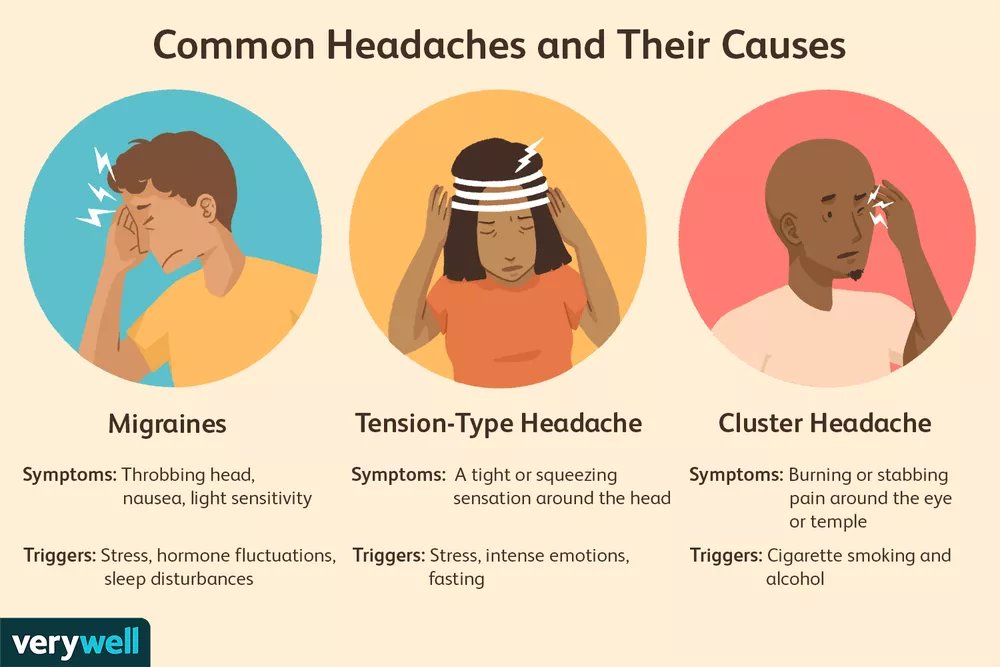 If necessary, paracetamol or ibuprofen should be used to relieve pain and a high temperature.
If necessary, paracetamol or ibuprofen should be used to relieve pain and a high temperature.
Make sure any painkillers you give to your child are appropriate for their age. Read more about giving your child painkillers.
Antibiotics aren’t routinely used to treat middle ear infections, although they may occasionally be prescribed if symptoms persist or are particularly severe.
Read more about treating middle ear infections
What causes middle ear infections?
Most middle ear infections occur when an infection such as a cold, leads to a build-up of mucus in the middle ear and causes the Eustachian tube (a thin tube that runs from the middle ear to the back of the nose) to become swollen or blocked.
This mean mucus can’t drain away properly, making it easier for an infection to spread into the middle ear.
An enlarged adenoid (soft tissue at the back of the throat) can also block the Eustachian tube. The adenoid can be removed if it causes persistent or frequent ear infections. Read more about removing adenoids.
Read more about removing adenoids.
Younger children are particularly vulnerable to middle ear infections as:
- the Eustachian tube is smaller in children than in adults
- a child’s adenoids are relatively much larger than an adults
Certain conditions can also increase the risk of middle ear infections, including:
- having a cleft palate – a type of birth defect where a child has a split in the roof of their mouth
- having Down’s syndrome – a genetic condition that typically causes some level of learning disability and a characteristic range of physical features
Can middle ear infections be prevented?
It’s not possible to prevent middle ear infections, but there are some things you can do that may reduce your child’s risk of developing the condition. These include:
- make sure your child is up-to-date with their routine vaccinations – particularly the pneumococcal vaccine and the DTaP/IPV/Hib/HepB (6-in-1) vaccine
- avoid exposing your child to smoky environments (passive smoking)
- don’t give your child a dummy once they’re older than six to 12 months old
- don’t feed your child while they’re lying flat on their back
- if possible, feed your baby with breast milk rather than formula milk
Avoiding contact with other children who are unwell may also help reduce your child’s chances of catching an infection that could lead to a middle ear infection.:max_bytes(150000):strip_icc()/stomach-flu-symptoms-770657-86-310db9fd0f1543e289250a64c8384d58.png)
Further problems
Complications of middle ear infections are fairly rare, but can be serious if they do occur.
Most complications are the result of the infection spreading to another part of the ear or head, including:
- the bones behind the ear (mastoiditis)
- the inner ear (labyrinthitis)
- the protective membranes surrounding the brain and spinal cord (meningitis)
Rarely, infections can leave a perforation or hole in the eardrum.
If complications do develop, they often need to be treated immediately with antibiotics in hospital.
Read more about the complications of middle ear infections
Diagnosing middle ear infections
A middle ear infection (otitis media) can usually be diagnosed using an instrument called an otoscope.
An otoscope is a small handheld device with a magnifying glass and a light source at the end. Using an otoscope, a doctor can examine the ear to look for signs of fluid in the middle ear, which may indicate an infection.
Signs of fluid in the middle ear can include the ear drum:
- bulging
- being an unusual colour (usually red or yellow)
- having a cloudy appearance
In some cases, a hole may have developed in the eardrum (perforated ear drum) and there may be fluid in the ear canal (the tube between the outer ear and eardrum).
Some otoscopes can also be used to blow a small puff of air into the ear to check for any blockages in the middle ear, which could be a sign of an infection. If the Eustachian tube (the tube that connects the throat and middle ear) is clear, the eardrum will move slightly. If it’s blocked, the eardrum will remain still.
Further tests
Further tests are normally only required if treatment isn’t working or complications develop. These tests will usually be carried out at your local ear, nose and throat (ENT) department.
Some of the tests that may be carried out are described below.
Tympanometry
Tympanometry is a test that measures how the ear drum reacts to changes in air pressure.
During a tympanometry test, a probe is placed into your child’s ear. The probe changes the air pressure at regular intervals while transmitting a sound into the ear. A measuring device is attached to the probe to record how the drum moves and how changes in air pressure affect this movement.
A healthy ear drum should move easily if there’s a change in air pressure. If your child’s ear drum moves slowly or not at all, it usually suggests there’s fluid behind it.
Audiometry
Audiometry is a hearing test that uses a machine called an audiometer to produce sounds of different volume and frequency. This can help determine if your child has any hearing loss as a result of their condition.
During the test, your child listens through headphones and is asked if they can hear the sounds.
Scans
On the very rare occasions where there’s a possibility the infection has spread out of the middle ear and into the surrounding area, a scan of the ear may be carried out.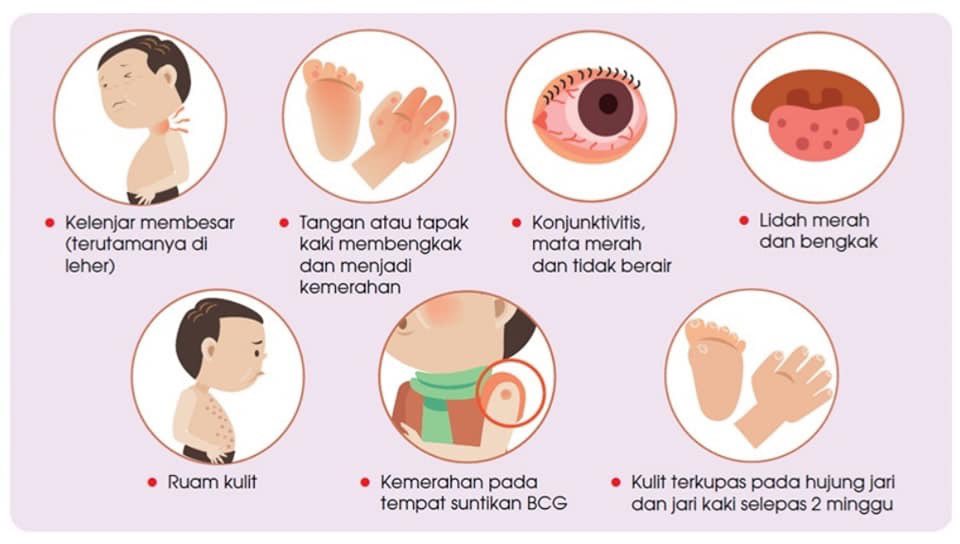 This may be either a:
This may be either a:
- computerised tomography (CT) scan
- magnetic resonance imaging (MRI) scan
A CT scan takes a series of X-rays and uses a computer to assemble the scans into a more detailed image, whereas an MRI scan uses strong magnetic fields and radio waves to produce images of the inside of the body.
Treating middle ear infections
Most middle ear infections (otitis media) clear up within three to five days and don’t need any specific treatment.
You can relieve any pain and a high temperature using over the counter painkillers such as paracetamol and ibuprofen.
Make sure any painkillers you give to your child are appropriate for their age.
Placing a warm flannel or washcloth over the affected ear may also help relieve pain until the condition passes.
Antibiotics
Antibiotics aren’t routinely used to treat middle ear infections as there’s no evidence that they speed up the healing process. Many cases are caused by viruses, which antibiotics aren’t effective against.
Using antibiotics to treat minor bacterial infections also increases the likelihood of bacteria becoming resistant to them over time. This means more serious infections could become untreatable in the future. Read about antibiotic resistance for more information.
If antibiotics are needed, a five-day course of an antibiotic called amoxicillin is usually prescribed. This is often given as a liquid. Common side effects of amoxicillin include:
- a rash
- feeling sick
- diarrhoea
An alternative antibiotic such as erythromycin or clarithromycin may be used for people allergic to amoxicillin.
In some cases, your GP may give you a prescription that you can choose to pick up a few days later if the condition hasn’t improved by then.
Adults and children who develop a long-term middle ear infection (chronic suppurative otitis media) may benefit from short courses of antibiotic ear drops.
Children
Antibiotics are usually only considered if your child:
- has a serious health condition that makes them more vulnerable to complications, such as cystic fibrosis or congenital heart disease
- is less than three months old
- is less than two years old with an infection in both ears
- has discharge coming from their ear
Adults
Adults may be prescribed antibiotics if:
- they have a serious health condition that makes them more vulnerable to complications, such as cystic fibrosis or congenital heart disease
- symptoms are showing no signs of improvement after four days
Grommets
For children with recurrent severe middle ear infections, tiny tubes may be inserted into the eardrum to help drain fluid.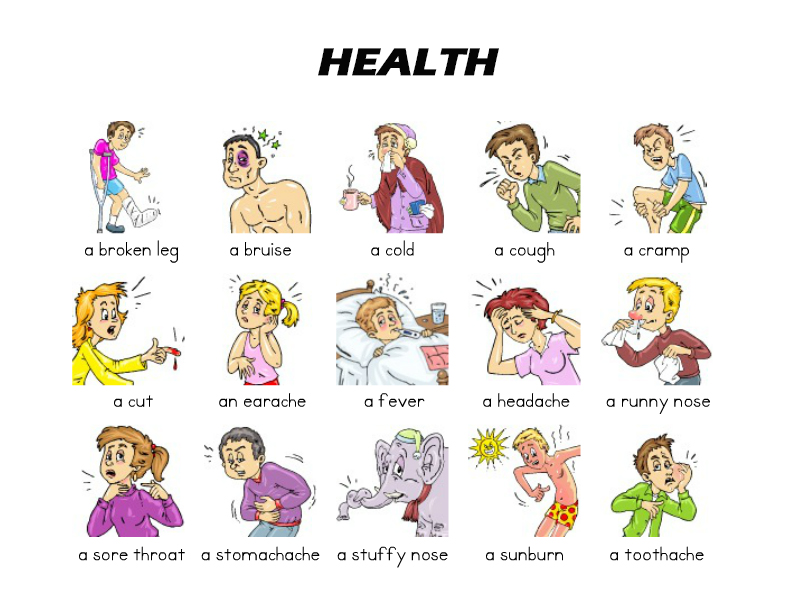 These tubes are called grommets.
These tubes are called grommets.
Grommets are inserted under general anaesthetic, which means your child will be asleep and won’t feel any pain. The procedure usually only takes about 15 minutes and your child should be able to go home the same day.
A grommet helps keep the eardrum open for several months. As the eardrum starts to heal, the grommet will slowly be pushed out of the eardrum and eventually falls out. This process happens naturally and shouldn’t be painful. Most grommets fall out within six to 12 months of being inserted.
Some children need another procedure to replace the grommets if they’re still experiencing problems.
Treatment with grommets isn’t routinely funded in all areas or for adults with recurrent otitis media.
Complications of middle ear infections
Serious complications of middle ear infections (otitis media) are very rare but very young children are still at risk because their immune systems are still developing.
Some of the main complications associated with middle ear infections are detailed below.
Mastoiditis
Mastoiditis can develop if an infection spreads out of the middle ear and into the area of bone underneath the ear (the mastoids).
Symptoms of mastoiditis can include:
- a high temperature (fever)
- swelling behind the ear, which pushes it forward
- redness and tenderness or pain behind the ear
- a creamy discharge from the ear
- headache
- hearing loss
Mastoiditis is usually treated in hospital with antibiotics given through a drip directly into a vein (intravenously). In some cases, surgery may be required to drain the ear and remove the infected mastoid bone.
Cholesteatoma
A cholesteatoma is an abnormal collection of skin cells inside the ear that can sometimes develop as a result of recurring or persistent middle ear infections.
If it’s not treated, a cholesteatoma can eventually damage the delicate structures deep inside your ear, such as the tiny bones that are essential for hearing.
Symptoms of a cholesteatoma can include:
- hearing loss
- weakness in half your face
- dizziness
- tinnitus – hearing sounds from inside their body rather than from an outside source
In most cases, surgery is required to remove a cholesteatoma.
Labyrinthitis
In some cases, an infection in the middle ear can spread into the inner ear and affect the delicate structure deep inside the ear called the labyrinth. This is known as labyrinthitis.
Symptoms of labyrinthitis can include:
- dizziness
- vertigo (the feeling that you, or the environment around you, is moving or spinning)
- loss of balance
- hearing loss
The symptoms of labyrinthitis usually pass within a few weeks, although medication to relieve the symptoms and treat the underlying infection may sometimes be prescribed. Read more about treating labyrinthitis.
Problems with speech and language development
If your child has frequent ear infections that affect their hearing while they’re very young, there’s a risk their speech and language development may be affected.
Contact your GP for advice if you’re concerned about your child’s development at any point.
Facial paralysis
In very rare cases, the swelling associated with otitis media can cause the facial nerve to become compressed. The facial nerve is a section of nerve that runs through the skull and is used by the brain to control facial expressions.
Compression of the nerve can lead to a person being unable to move some or all of their face. This is known as facial paralysis.
This can be frightening when it first occurs, as many parents are concerned their child may have experienced a stroke. However, the condition usually resolves once the underlying infection has passed and rarely causes any long-term problems.
Meningitis
A very rare and serious complication of a middle ear infection is meningitis. This can occur if the infection spreads to the protective outer layer of the brain and spinal cord (the meninges).
Symptoms of meningitis can include:
- severe headache
- being sick
- a high temperature (fever)
- stiff neck
- sensitivity to light
- rapid breathing
- a blotchy red rash that does not fade or change colour when you place a glass against it (although this is not always present)
If you think your child may have meningitis, call 999 and ask for an ambulance.
Meningitis caused by a bacterial infection is usually treated in hospital with antibiotics given through a drip directly into a vein (intravenously). Read more about treating meningitis.
Brain abscess
Another very rare and serious complication of a middle ear infection is a brain abscess. This is a pus-filled swelling that develops inside the brain.
Symptoms of a brain abscess can include:
- a severe headache
- changes in mental state, such as confusion
- weakness or paralysis on one side of the body
- a high temperature (fever)
- seizures (fits)
If you suspect that you or someone you know may have a brain abscess, call 999 for an ambulance.
A brain abscess is usually treated using a combination of antibiotics and surgery. The surgeon will usually open the skull and drain the pus from the abscess or remove the abscess entirely.
What you need to know about ear infections?
There are 4 main types of ear infections that affect the middle ear. They can be triggered by both bacteria and viruses:
They can be triggered by both bacteria and viruses:
- acute otitis media is the most common type. Swelling spreads along the eardrum, which causes severe pain;
- Chronic suppurative otitis media is a complication of acute inflammation of the middle ear. Accompanied by perforation of the eardrum;
- exudative otitis media, usually seen in children. Develops after the initial infection has already been destroyed, but the exudate lingers in the middle ear;
- chronic exudative otitis media. It develops when the exudate is in the middle ear for a long time or a new one is constantly formed. This type of ear infection can cause hearing problems.
Chronic ear infections can lead to some complications:
- mastoiditis – inflammation of the mastoid process of the temporal bone;
- cholesteatoma – a cavity that consists of overgrown and dead cells in the middle ear.
Symptoms
Symptoms of acute middle ear infection include:
- pain in the ear;
- hearing problems;
- fever, increase in body temperature up to 38 ° C and above;
- nausea or vomiting;
- ear discharge.

Chronic exudative infection of the middle ear causes hearing problems, balance disorders.
Symptoms of chronic suppurative middle ear infection include:
- hearing loss;
- ear discharge;
- perforation of the tympanic membrane.
Causes and risk factors
Acute ear infections develop when the Eustachian tube (the canal that connects the middle ear and throat) becomes blocked. In children, this channel is much narrower than in adults, so they develop inflammatory processes more often.
Chronic ear infections occur due to prolonged or recurrent acute inflammation.
Ear infections can be caused by:
- bacterial infection;
- colds;
- flu.
Risk factors for chronic ear infections are:
- recent upper respiratory tract infection;
- Down syndrome;
- split sky;
- genetic predisposition.
Treatment
The American Academy of Otolaryngology does not recommend the use of antibiotics, antihistamines, and anti-inflammatory drugs for the treatment of exudative otitis media. However, they are indicated for the treatment of acute ear infections.
However, they are indicated for the treatment of acute ear infections.
Treatment of chronic ear infection includes:
- dry clean. This is a procedure in which the doctor cleans the ear of dirt and exudate;
- drug treatment with non-steroidal anti-inflammatory drugs. It is important to remember that acetylsalicylic acid is contraindicated in children;
- Antibiotics are indicated when the ear infection is caused by bacteria. For patients with chronic inflammation, they may not be effective;
- the use of antifungal agents is recommended for fungal infection of the ear;
- Tympanocentesis, or “ear tap”, is a procedure in which fluid is removed from the eardrum for bacteriological examination. In the case when an ear infection does not respond to treatment, the doctor may place a tube in the eardrum to compensate for pressure;
- removal of adenoids. Adenoids are glands in the back of the nose that are responsible for destroying the infection.
 With prolonged inflammation, they can significantly increase in size, which leads to an ear infection and the accumulation of exudate. In the case when such processes are often repeated, the doctor can remove the adenoids.
With prolonged inflammation, they can significantly increase in size, which leads to an ear infection and the accumulation of exudate. In the case when such processes are often repeated, the doctor can remove the adenoids.
Prophylaxis
The following tips can help prevent recurrence of chronic ear infections:
- avoid exposure to cigarette smoke. Active and passive smoking leads to irritation of the Eustachian tube, which increases the risk of ear infections;
- , use ear sticks with extreme caution as they can cause injury and disrupt the natural cleaning mechanism in the ear canal.
What is worth remembering?
Some inflammatory processes in the ear can go away on their own. However, if the symptoms do not disappear within 3 days, you should consult a doctor who will be able to choose the necessary treatment depending on the type of ear infection.
Based on www. medicalnewstoday.com
medicalnewstoday.com
Types and symptoms of ear diseases, what hearing diseases are
Content:
- How ear diseases are diagnosed
- Treatment of diseases of the ear
Types and symptoms of ear diseases
Almost all ear diseases, inflammatory, non-inflammatory, fungal, caused by trauma, have a similar clinical picture.
Eustachitis
This is an inflammatory disease of the auditory canal (it is called the Eustachian tube), which has an infectious nature. Due to inflammation, air exchange in the ear cavity is disturbed, which leads to otitis media.
The disease manifests itself as:
- pain and discomfort;
- sensation of the presence of fluid in the auditory canal;
- hearing loss;
90,007 indistinct noises and crackles in the inflamed ear.
If the process continues to develop and passes into the purulent stage, the temperature rises.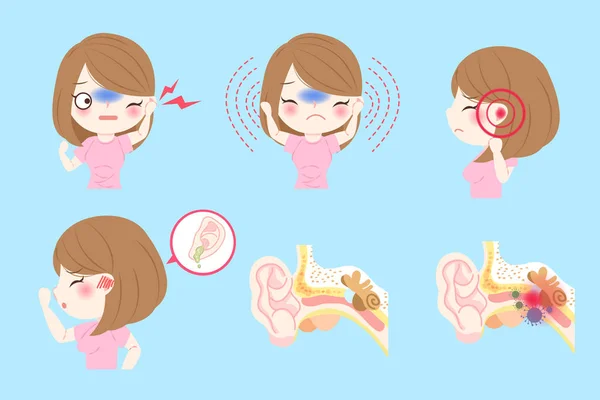 All symptoms are worse when the person is in motion.
All symptoms are worse when the person is in motion.
Mastoiditis
It is also an inflammatory disease and has an infectious nature. Inflammation of the inner ear often develops as a complication of the pathological process in the ear canal.
Symptoms are more intense:
- the temperature rises sharply and reaches 39.0 – 39.5 degrees;
- general health worsens: weakness occurs, signs of intoxication increase;
- there is a throbbing pain, accompanied by hearing loss;
- appears purulent discharge;
- The outer part of the ear is swollen.
One of the clear and early signs of mastoiditis is dizziness that appears without warning, suddenly.
Meniere’s disease
Disease, the main manifestation of which is increased pressure in the ear labyrinth. Because of it, the normal functioning of blood vessels is disrupted, so fluid gradually accumulates in the labyrinth. Why there is increased pressure in this area has not yet been fully elucidated. The disease can be stopped, but it is not yet possible to achieve a complete cure.
Why there is increased pressure in this area has not yet been fully elucidated. The disease can be stopped, but it is not yet possible to achieve a complete cure.
Main symptoms:
- paroxysmal sudden hearing loss;
- dizziness;
- imbalance, nausea;
- tinnitus is regular;
- Loud noise increases discomfort.
Neuritis of the auditory nerve (cochlear neuritis)
It occurs frequently and almost always acquires a chronic course. The inflammatory process affects the nerve plexuses of the inner ear. Symptoms are hearing impairment and the appearance of “extra” noise in the form of rustling. It is usually diagnosed in people over 50 years of age. A serious complication of the disease is necrosis, leading to progressive deafness that cannot be cured.
Otitis and tympanitis
Otitis is a group of infectious and inflammatory pathological processes affecting various parts of the ear.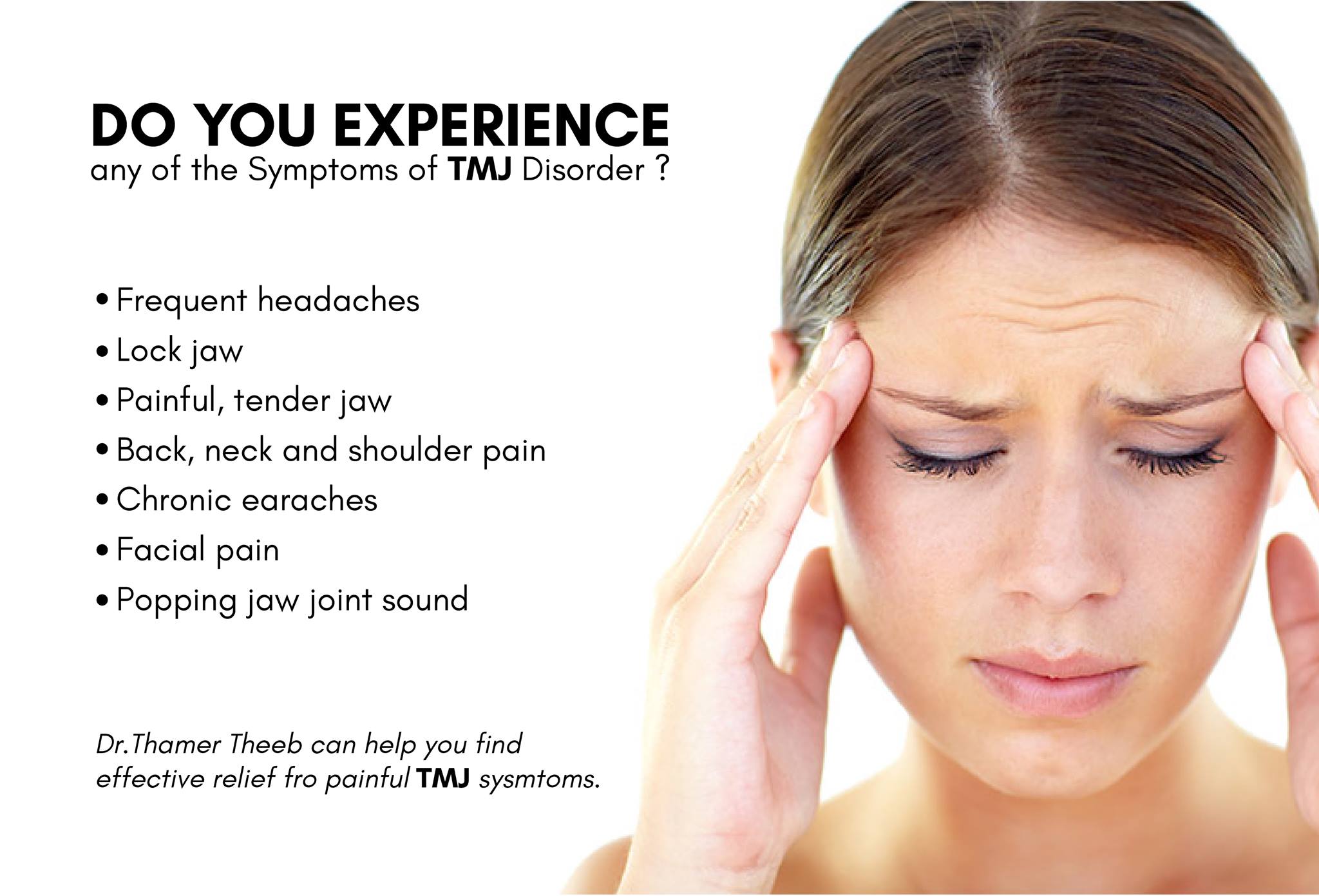 Tympanitis is a type of otitis media that affects the eardrum. Otitis media is often diagnosed in children and the elderly. Otitis is divided according to the place of occurrence into external, middle and internal. The latter sometimes has its own name – labyrinthite.
Tympanitis is a type of otitis media that affects the eardrum. Otitis media is often diagnosed in children and the elderly. Otitis is divided according to the place of occurrence into external, middle and internal. The latter sometimes has its own name – labyrinthite.
Symptoms of otitis media:
- sharp pain and throbbing, aggravated by moving the jaw;
- fever, feeling unwell, lethargy;
- stuffiness in the ear;
- may cause short-term hearing loss;
- enlarged lymph nodes.
If there are complications, the process becomes purulent (mesotympanitis), sometimes it also affects the bone tissue (epithympanitis).
Otomycosis
Disease caused by fungi (mold, yeast-like). Fungal infection is characteristic of the outer or middle sections. The first stage is asymptomatic, then the clinical picture becomes more pronounced.
- Worried about persistent itching;
- painful sores appear, sometimes with suppuration;
- there is a headache on the side of the affected ear;
- discharge appears, there is a feeling of congestion;
- pinna painful and sensitive.

Otomycosis is often diagnosed with metabolic problems, such as diabetes, after chemotherapy sessions, with HIV status that causes a drop in immunity.
Otosclerosis
Refers to hereditary family pathologies. When the disease affects the bone tissue in the inner ear. It is diagnosed more often in premenopausal women, but the initial manifestations can be observed at a younger age. If not treated, it will lead to irreversible bilateral hearing loss.
Signs indicating possible atherosclerosis:
- gradual hearing loss without clear cause;
- appearance of tinnitus, or only in one ear;
- occasional dizziness;
- in a noisier environment, the patient begins to hear better;
- imbalances appear.
If several of the above symptoms appear, an otolaryngologist should be consulted.
Otogenic sepsis
A complication that occurs if purulent inflammation in the middle ear area becomes further widespread. The infection enters the general blood flow through the lymphatic vessels.
The infection enters the general blood flow through the lymphatic vessels.
The complication is more common in young people. Symptoms increase rapidly:
- temperature jumps;
- chilliness alternating with excessive sweating;
- worried about tachycardia, shortness of breath;
- there is a lack of appetite;
- health deteriorates sharply.
This condition is a medical emergency. For urgent surgical intervention, the patient is urgently hospitalized in the clinic.
Earplug
This is the name of a thick clot of earwax. It can clog the ear canal, which will lead to the following unpleasant manifestations:
- a foreign body is felt in the ear, congestion worries;
- hearing loss;
- cough and yawning may occur;
- sometimes there is discomfort similar to motion sickness while driving.
It is not uncommon for these symptoms to appear after bathing, as the clot of earwax swells with water and can block the passage.
Ear injuries
The eardrum can be damaged if the pressure drop is too rapid. This can happen in the air, or in water at a sufficient depth. Sometimes the eardrum is damaged by strong acoustic vibrations – very loud sounds and strong noises. Damage causes bleeding and pain. If the eardrum is damaged mechanically, for example, with a sharp object, or when struck, dizziness and ringing in the ear occur.
An ear injury is characterized by a short-term severe hearing loss.
Development of neoplasms of various nature is possible. The tumor appears in the region of the auricle, or near it, the occurrence of a tumor in another department is a very rare phenomenon. Neoplasms grow slowly and are usually painless.
How are ear diseases diagnosed? The otolaryngologist examines the outer part of the ear, and if this is not enough for diagnosis, he prescribes instrumental and hardware studies.
- Otoscopy is a painless method of examining the outer ear using an otoscope.
 This is an instrument that looks like a tube with a light. It helps to reveal hidden infections, injuries, and also to detect a foreign body.
This is an instrument that looks like a tube with a light. It helps to reveal hidden infections, injuries, and also to detect a foreign body. - Tympanometry is an acoustic method for studying the functionality of the auditory tube and the mobility of the ossicles in the middle ear.
- Audiometry – a test for the study of hearing acuity. It is carried out by an audiologist on a computer.
- X-ray of the ear and temporal bone – recommended for inflammatory pathologies. Helps to identify pathological changes in the inner ear.
- ultrasound.
- Computed tomography.
- Bacterial culture is performed for discharge and suspected bacterial infection. It detects the sensitivity of bacteria to antibiotics, which allows you to choose the best therapy. In chronic ear infections, a complete blood count is prescribed.
Treatment of ear diseases
In the Bibirevo Central Clinic, the treatment regimen is selected by an otolaryngologist after a thorough diagnosis.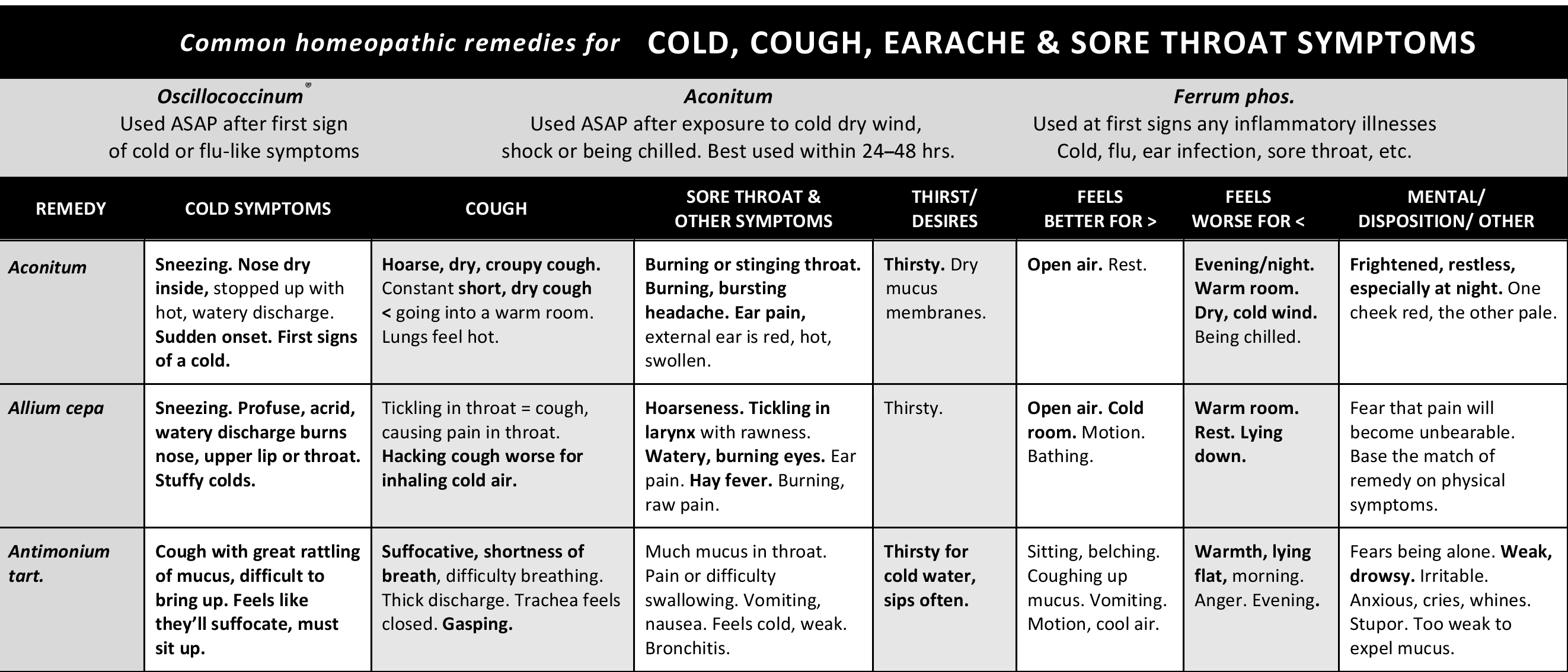 Self-medication is not applicable. The main goal of complex treatment is to eliminate inflammation, remove pain. If the disease is chronic, it is important to extend the period of remission.
Self-medication is not applicable. The main goal of complex treatment is to eliminate inflammation, remove pain. If the disease is chronic, it is important to extend the period of remission.
The following groups of drugs are prescribed for the treatment of ear diseases:
- Antibiotics in the form of tablets or drops (if a bacterial infection is detected).
- Analgesics.
- Antiseptic solutions for washing the affected ear.
- Anti-inflammatory ointments that are placed in the ear canal with the help of turundas.
- Nasopharyngeal vasoconstrictor drops.
- Hormonal preparations (for medical reasons).
Physiotherapeutic procedures are effective, but they are used only after the acute period of the disease has been removed. Physiotherapy is prescribed only by a doctor. If a fungal disease is diagnosed, thermal procedures and physiotherapy are prohibited. If ear problems are caused by a sulfur plug, manipulations are applied to make it softer.

 Cold eardrops can make you feel dizzy.
Cold eardrops can make you feel dizzy.
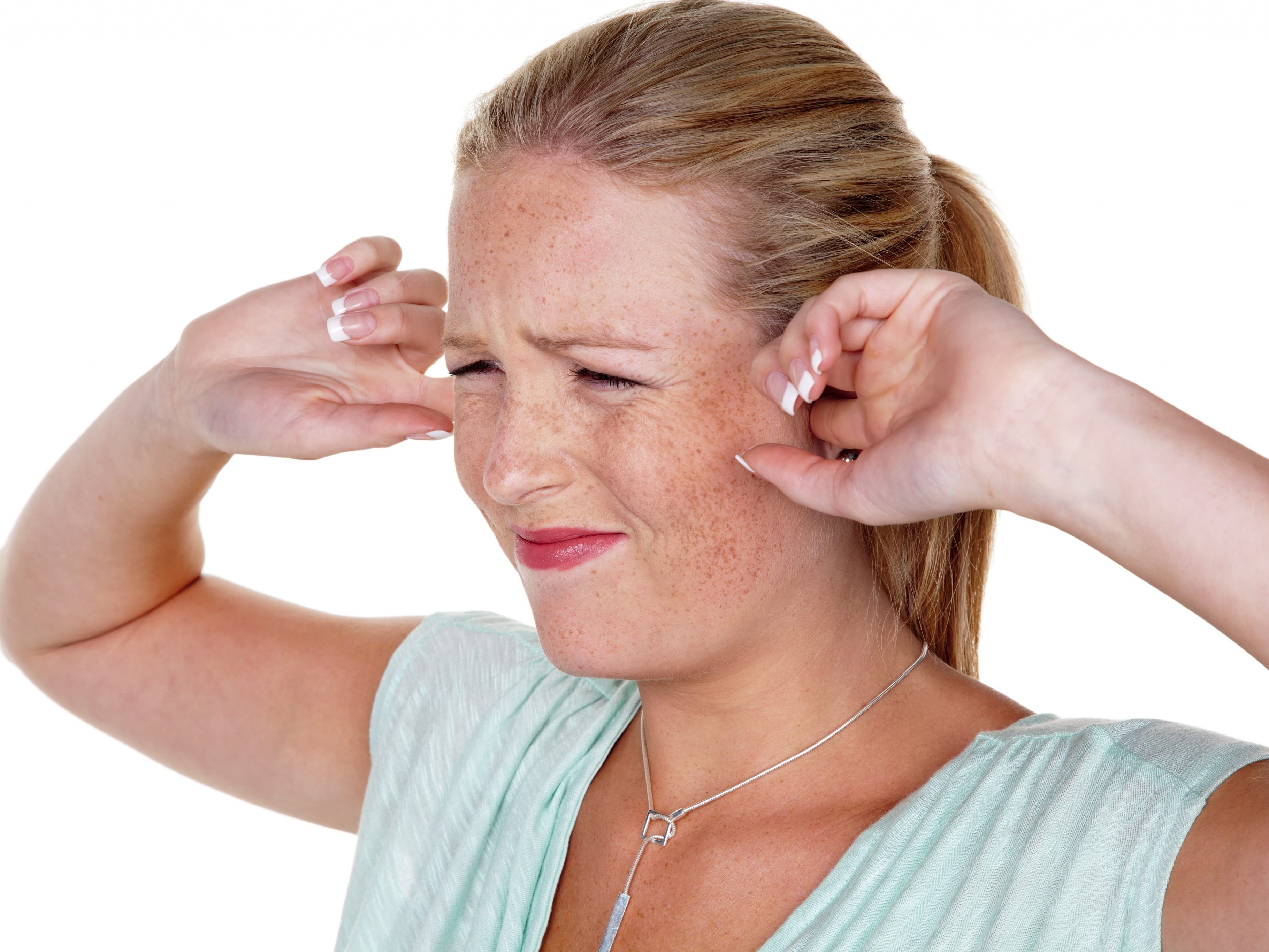
 With prolonged inflammation, they can significantly increase in size, which leads to an ear infection and the accumulation of exudate. In the case when such processes are often repeated, the doctor can remove the adenoids.
With prolonged inflammation, they can significantly increase in size, which leads to an ear infection and the accumulation of exudate. In the case when such processes are often repeated, the doctor can remove the adenoids.
:max_bytes(150000):strip_icc()/3232847_color1-5c0191cec9e77c00013b3053.png) This is an instrument that looks like a tube with a light. It helps to reveal hidden infections, injuries, and also to detect a foreign body.
This is an instrument that looks like a tube with a light. It helps to reveal hidden infections, injuries, and also to detect a foreign body.